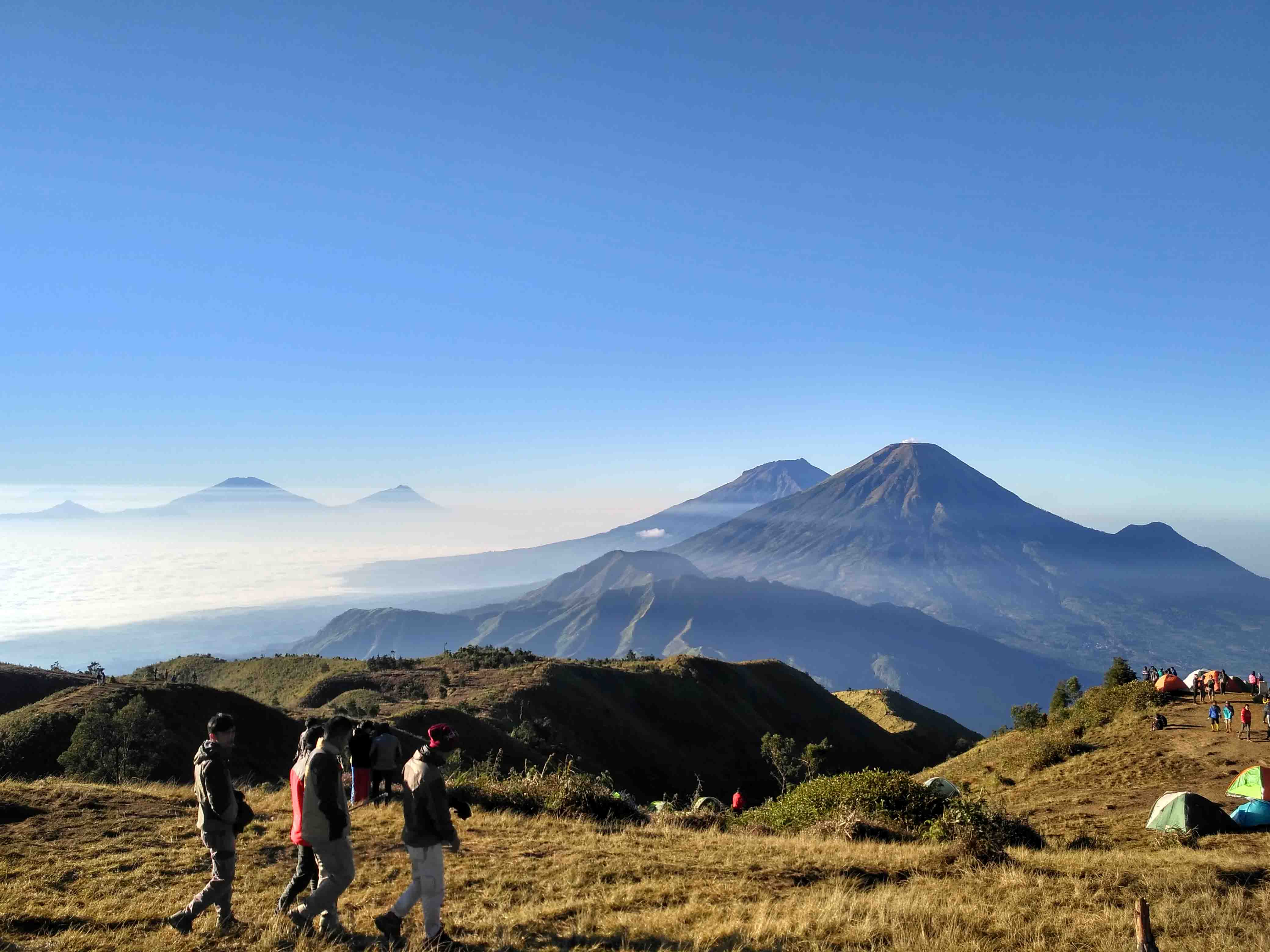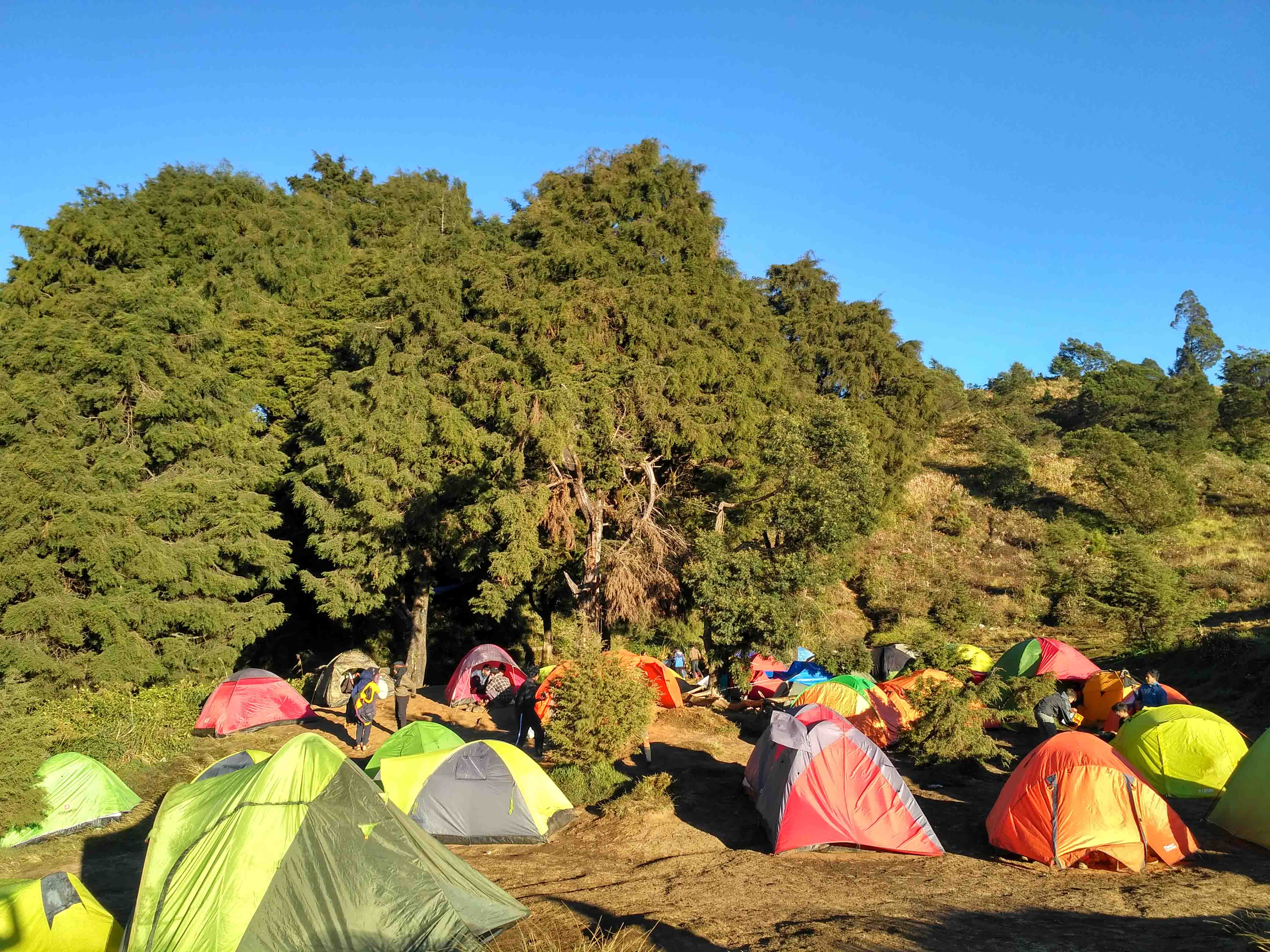Hiking Mount Prau: The Best Golden Sunrise
Mount Prau has become a favorite mountain for many climbers in Jawa Tengah because the beauty of Mount Prau has succeeded in making anyone miss it. Most climbers say that the sunrise on Mount Prau is the best in Southeast Asia.
Mount Prau is located in the Dieng Plateau area, Jawa Tengah, and is the boundary between four regencies, Batang, Kendal, Temanggung, and Wonosobo Regencies. The height of Mount Prau reaches 2,565 meters above sea level and is a mountain that is full with beginner climbers.
Therefore, every weekend Mount Prau is always filled with climbers. Especially if not to enjoy the panoramic view of the sunrise while taking a break from the hustle and bustle of the city. For tourists who have plans to climb Mount Prau, consider the guides that you must know below:
1. Number of basecamps
There are six official basecamps or starting points for climbing Mount Prau that are basecamp Dieng, Patakbanteng, Kalilembu, Dwarawati, Wates, and Igirmranak.
Of these six basecamps, Dieng and Patakbanteng basecamps are the climbers' favorites. The location is near the main highway is the reason why.
To reach Mount Prau basecamp in Dieng or Patakbanteng, tourists can also use public transportation. At Mendolo Terminal, Wonosobo, there are already a lot of micro buses that drives climbers directly to these two basecamps, aka without transit in some places.
However, climbers must be patient for a while at the terminal because usually the bus conductor will wait until the bus full first, then leaves for the destination.
2. Best time
July to August is the best time to climb Mount Prau. The weather in these three months is sunny. Hikers can enjoy the atmosphere of sunrise and sunset. When it is daytime, the clear blue sky without clouds lies stunningly.
Apart from these three months, climbers can still climb. It is just that the weather is not as sunny as July to August. Occasionally, fog and even rain comes when it enters November or December, making climbing difficult.
What to watch out for when climbing in July to August, beware of cold temperatures. Because it was the dry season. So cold, the air temperature can be below 0 degrees Celsius. It can even form ice dew.
If that is the case, don't forget to bring climbing equipment that is safe and suitable for cold air. Do not let the intention to witness the magical sunrise of Mount Prau fail because you do not bring a thick jacket.
In January to March or April, Mount Prau will usually be completely closed. This closure has become an annual routine for the management. The main reason is the weather factor which has entered the rainy season. Closure also aims for ecosystem restoration, repair and maintenance of pathways, reforestation or reforestation, and cleaning of waste.
3. Entrance Ticket Prices and facilities
For a climbing registration ticket, every Mount Prau climber will be charged 15,000 IDR. In addition to getting a ticket, usually climbers will get a map as a guide and a trash bag.
Meanwhile, to enjoy basecamp facilities such as toilets and others, climbers are only charged 10,000 IDR. Climbers can also rest at basecamp before or after climbing. Including if you want to spend the night so you can climb to the top the next day.
Supporting facilities at the Mount Prau basecamp are very complete. In addition to representative toilets and bathrooms, there are also parking lots, food stalls, gift shops, and supermarkets. Places to stay or homestay are also around the basecamp including camping equipment rental places.
4. Rules for climbing in the midst of a pandemic
As of this article is written, Wonosobo Tourism and Culture Office (Disparbud) is currently implementing a climbing trial. After closing due to the Covid-19 pandemic, Mount Prau has re-opened its hiking trail. However, this opening to the public is still in the testing phase.
The plan is that Mount Prau climbing tours with the implementation of health protocols will last for 30 days starting July 3, 2020. Well, because climbing in the midst of a pandemic, of course there are a number of conditions that climbers must comply with.
First, there is a limit on the number of visits to Mount Prau by 25 percent. For the Patakbanteng basecamp the climbing quota is 600 people per day and the Dieng and Wates basecamps are 250 people. Dwarawati and Igirmranak basecamps are 100 people each and Kalilembu basecamps are 200 people per day.
The second rule, there is a limitation on the duration or length of the visit. At Mount Prau, climbers must have descended before 12.00 PM. In addition, climbing for more than one day is temporarily prohibited during the trial period unless special permission is given.
Third, Mount Prau only accepts climbers from the Province of Jawa Tengah and the Special Region of Yogyakarta (DIY). Climbers must also be in good health. This can be proven by a health certificate valid for seven from the area of origin. Thus, climbers do not have to have a rapid test / PCR / swab test.
If you do not bring a health certificate, climbers can check their health at the Dieng Health Center or the Kejajar Health Center. The fee is only 20,000 IDR, provided that you have an ID card or a copy of the family card.
At basecamp, climbers must maintain a distance of at least 1 meter from each other. Meanwhile, when walking or climbing, keep a safe distance of 2-3 meters. Hikers must also wear masks. Hand sanitizer is something that must be carried by every climber.
With this set of rules, are you ready to climb Mount Prau? Let's pack your backpack and follow the health protocols! (*Contributor)


